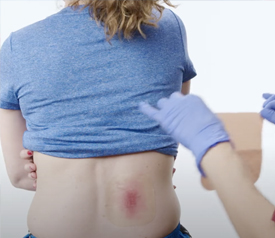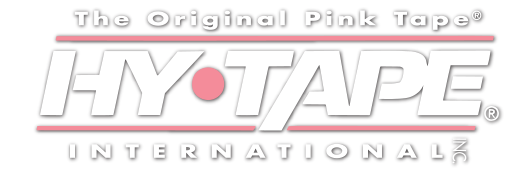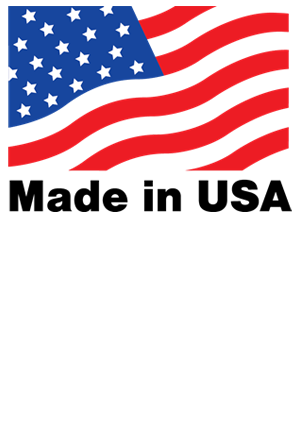
Most modern dressings are considered occlusive. So, is there are role for non-occlusive dressings in modern wound care? We review occlusive and non-occlusive dressings and how to best use them.
What is the ideal wound healing environment?
The goals of dressings are to prevent infection and to promote an ideal healing environment. The ideal environment for wound healing is one that is moist—but not wet—and one that limits the ability of pathogens to come into contact with the wound. Overly dry wounds form scabs and interfere with the action of epidermal cells. Wet wounds dilute the healing cells and factors, which also slows healing. The “Goldilocks” situation—not too wet, not too dry—provides just the right environment for immune cells to prevent infection and skin and other tissues to heal themselves.
Non-occlusive dressings
Traditionally, most wound dressings were non-occlusive. Gauze, natural or synthetic bandages, cotton, rayon, polyester, and even wool dressings have been used to prevent wounds from becoming contaminated. Alginate dressings made of brown algae/seaweed are highly porous when applied and are also considered non-occlusive. Gauze dressings are perhaps the prototypical non-occlusive dressing. Gauze has numerous areas between fibers that allow the movement of air, and its absorbent properties wick away moisture from the wound. On the other hand, the porous nature of non-occlusive dressings could allow contaminates to pass through the bandage and contact the wound. Notably, microorganisms can embed up to 60 layers of gauze.
Wet-to-dry dressings
As practitioners and scientists realized the importance of maintaining moisture in wounds, wet-to-dry gauze dressings came into use. The non-occlusive dressing was moistened, usually with sterile saline, and allowed to dry on the wound. The hope was that dead tissue would stick to the bandage as it dried and then could be pulled away from the wound during a dressing change, i.e., mechanical debridement. Unfortunately, in practice, the dried gauze pulls fragile, new, healthy tissue from the wound bed, re-injuring the wound. Plus, wet-to-dry dressing changes can be quite painful. Consequently, wet-to-dry dressings have fallen out of favor for most wound applications.
Waterproof tape and wound dressings
As the name implies, occlusive dressings provide an impermeable barrier between the air and the wound. If held tightly in place with occlusive medical tape, occlusive dressings can keep the wound moist and minimize pathogen penetration. The two major concerns (and perhaps contraindications) to occlusive dressings are that they may trap pathogens microorganisms in the wound (an environment that is good for wound healing is also good for bacterial growth) and they may create an excessively moist, i.e., wet wound environment.
Types of occlusive dressings
Modern wound care has risen to the challenge of excess moisture in wounds by offering a large variety of occlusive dressings. The major categories of occlusive dressings are:
- Films – Thin, clear dressings that usually have an adhesive side that faces the wound. Non-absorbent, but the wound can be visualized. Often used to cover IV lines, catheters, etc. rather than wounds.
- Foams – Absorbent dressings that can be impregnated with various substance (e.g., topical antibiotics). The wound surface is usually non-adhesive and removes cleanly if it remains moist. Often used for partial- and full-thickness wounds.
- Hydrogels – Gel formed mostly of water, these dressings are only slightly absorbent and, in fact, can moisten dry wound beds. Hydrogels are more accurately considered semi-occlusive since they allow bacterial penetration if they dry out.
- Hydrocolloids – Constructed of a dry hydrogel layer that faces the wound and provides absorption and a film or foam layer to prevent bacterial penetration and provide structural stability. Hydrocolloids with a backing layer are true occlusive dressings and prevent air and water exchange (hydrocolloids without backing are considered semi-occlusive).
Achieving the ideal wound healing environment
Achieving the ideal wound healing environment can be labor intensive and takes a trained clinician (e.g., wound care nurse) to inspect the wound at each dressing change. The wound should be adequately debrided, there should be good granulation tissue, and the wound bed should glisten. If the wound is too dry, healthy skin will affix to the dressing and be pulled off during removal. A dressing that retains or adds moisture should be used. If the wound is too moist, there will be frank exudate (or even signs of infection). An absorbent dressing should be applied to draw off excess fluid.
Which wound dressing to choose?
In modern, professional wound care, there are few indications for non-occlusive dressings. Unfortunately, because they gauze and other common non-occlusive bandages are inexpensive, they are still frequently used. Wound care professionals are trying to put and end to wet-to-dry orders. Furthermore, dry gauze is only really useful for relatively small, superficial wounds that would likely heal without a bandage anyway, e.g., to absorb blood from a wound that has not fully closed. With the exception of alginates that can be used for exudative wounds, there is not much call for a non-occlusive dressing. In actuality, the question is not “should I use an occlusive or non-occlusive dressing?”, but rather “which occlusive dressing should I use?”
Which occlusive dressing should I use?
Mild to moderately exudative wounds
Hydrocolloids are an excellent choice to maintain the right amount of wound moisture. They form a gel upon contact with exudate and facilitate autolytic debridement. There are a variety of different hydrocolloids with different degrees of moisture retention and absorption, so it is usually possible to fine tune the wound environment with hydrocolloids alone. Hydrocolloids are best for pressure ulcers, wounds with necrotic tissue or slough dermal ulcers, and various form of skin injury (tears, lacerations, etc.). Hydrocolloids would not be useful for dry wounds like burns or, on the other end of the spectrum, heavily exudative wounds.
Heavily exudative wounds
Foams are a better choice for heavily exudative wounds than hydrocolloids as they have better absorbing capacity. Foams are also suitable for deep and tunneling wounds. Alginates can also be used for moderately to heavily exudate wounds and light hemostasis, but they are not suitable to stop heavy bleeding.
Dry wounds
Hydrogels are perhaps the best choice for minor burns and dry wounds. They limit gas exchange between wound bed and the environment, so they retain moisture in the wound. Interestingly, medical grade honey can also be used for superficial and partial-thickness burns. Lastly, transparent films can also be used for dry wounds as they retain moisture.
Read More about Wound Dressings:
- Money and Wound Care – The Value of More Secure Dressings
- A Summer with Wounds and Scars Can Still Be Fun
- Pediatric Oxygen Therapy – Caring for the Littlest Ones
- Skin Friendly Bandage & Dressing Alternatives

